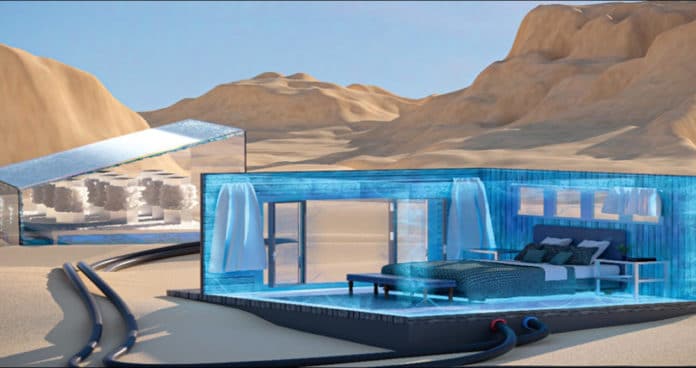Many hot and arid regions of the planet greatly need efficient cooling systems because of climate change, but not every community can access electricity for air conditioning and refrigeration.
Therefore, Saudi Arabia’s King Abdullah University of Science and Technology (KAUST) has set out to develop an efficient cooling system that works without the use of electricity. New, simple cooling system based on solar energy and the cooling effect of saltwater evaporation that could be used for refrigeration in hot regions with limited access to electricity.
The team designed a two-step cooling and regeneration system, which has no electrical components. It exploits the powerful cooling effect that occurs when certain salts are dissolved in water. This means that if salt is added to warm water, that water rapidly cools as the salt dissolves. After each cooling cycle, the system uses solar energy to evaporate the water and regenerate the salt, ready for reuse.
After some experimentation with different types of salt, ammonium nitrate (NH4NO3) proved to be the standout performer, with a cooling power more than four times greater than its closest competitor, ammonium chloride (NH4Cl). The ammonium nitrate salt’s exceptional cooling power can be attributed to its high solubility. This salt’s other advantage is that it is quite inexpensive and already widely used as fertilizer.
The simple cooling system driven by the capture of passive solar energy could provide low-cost food refrigeration and living space cooling for impoverished communities with no access to the electricity grid.
In lab tests, the team showed how the designed cooling system has good potential for food storage application. When the salt was gradually dissolved in water in a metal cup placed inside a polystyrene foam box, the temperature of the cup fell from room temperature to around 3.6 degrees Celsius within approximately 20 minutes and remained below 15 degrees Celsius for over 15 hours.
Additionally, once the salt solution reached room temperature, the team used solar energy to evaporate the water using a bespoke cup-shaped 3D solar regenerator. The cup was made from a material designed to absorb as much of the solar spectrum as possible. As the water evaporated, the NH4NO3 crystals grew over the cup’s outer wall. The crystallized salt can be collected automatically, representing a stored form of solar energy, ready to be reused for cooling when required.
